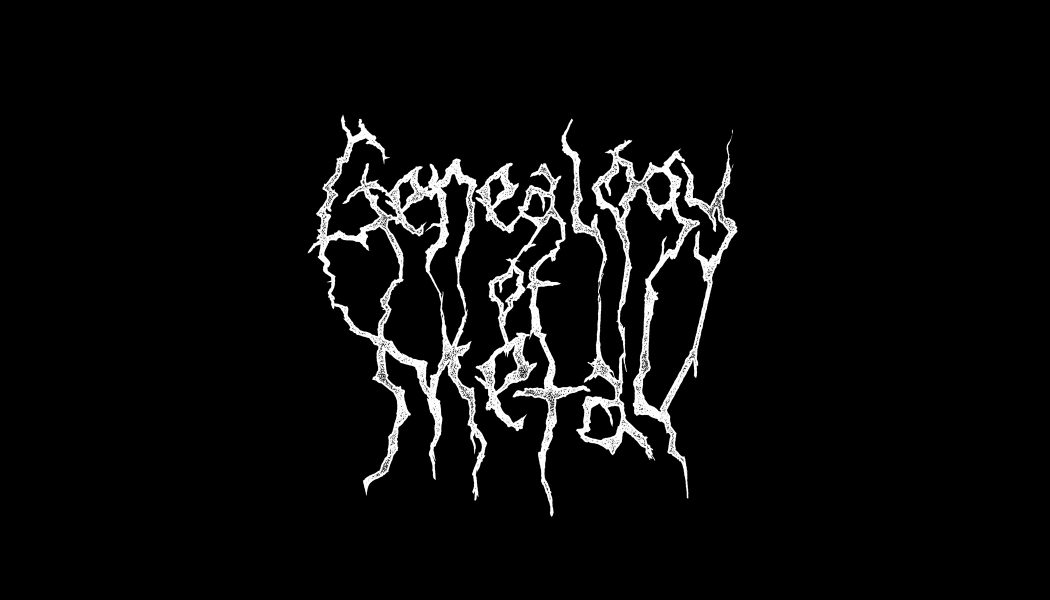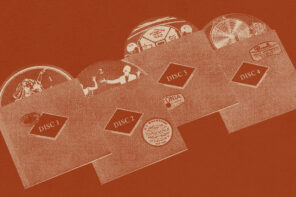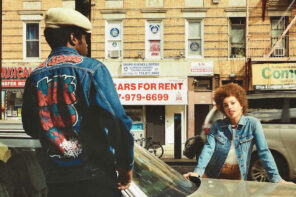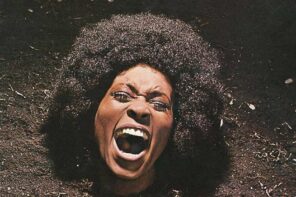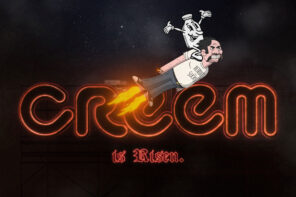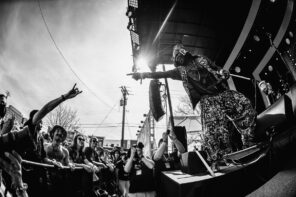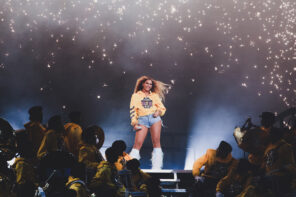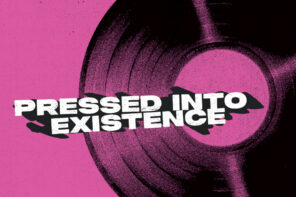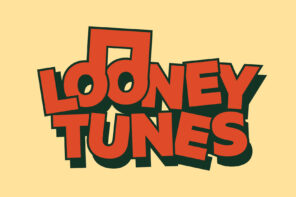Metal may seem one-note, but take a closer look
Before we start talking about the goblin costumes, the fake blood, the real blood, and the blast-beats, we’ve gotta go back to the beginning.
By Zach Causey
LISTEN
You can really trace it back to the late ‘60s, and a trio of acid-eating longhairs playing amped-up blues riffs. I’m of course referring to Led Zeppelin, Black Sabbath, and Deep Purple. These guys set the stage. Not only were they playing music crushingly heavier (and LOUDER) than anyone else around them at the time, but they brought in the lyrical motifs and more experimental, instrumental aspects of what metal would later become known for. Witches, drugs, sex, violence, and guitars, it was all there. All it needed was a little kick in the butt to start down the road to the wild stuff we have around today like Djent and Black Metal.As the ’70s played out, metal started to fracture and split. If there is one thing you can count on metalheads for, it is to go more extreme, no matter the direction. Extremely fast? Check. Extremely slow? Check. Extremely poppy? Check. Not content to just stick with meat and potatoes, blues-based rock, bands as diverse as Kiss and The Misfits injected theatricality (and face paint) into live shows. Van Halen popularized technical proficiency. Motörhead ratcheted up the raunch, while Iron Maiden upped the speed and fantasy-focused lyricism. The ’70s were the formative years, pulling the pin on the grenade-shrapnel explosion of genres that would be the ’80s.
Witches, drugs, sex, violence, and guitars, it was all there.
The kaleidoscopic variety of the ’80s was the perfect launching pad for popular metal of all shapes and sizes. Motley Crüe, Cinderella and Poison were at their peak popularity during this time. Combining the all-access sheen of pop music with the gain-heavy guitars of metal, these Sunset Strip-strutting Hair Metal bands (identified by their big, teased hairdos and mascara) broke metal into the mainstream.
Thrash, the head-banging reaction to the platform shoes and made-for-MTV pouts bashed through with Metallica (before the Napster lawsuits and art collecting), Slayer, Anthrax, Megadeth, and Pantera. Music for “true” metalheads. Pure aggression. The speed, anger and anti-Reaganism of Thrash offered a home for misfits and adrenaline junkies of all types.
Thrash was a perfect gateway drug to get to the atmospheric, lo-fi, and down-right scary Black Metal bands like Darkthrone slithering out of Norway at the time. Alongside this, Death Metal boomed. Bands like Venom influenced the extreme speed and creativity you might see today in Deafheaven. Subgenres splintered in all different directions.
We currently live in a golden age of metal, where any and all of this is just a click away, whether you are from Bergen or Bridgehampton. Sometimes it’s hard to distinguish between genres (though devotees will lecture you on the rules). But what could be more metal than creative destruction?
Let’s take a little look into the diverse ecosystem of metal.
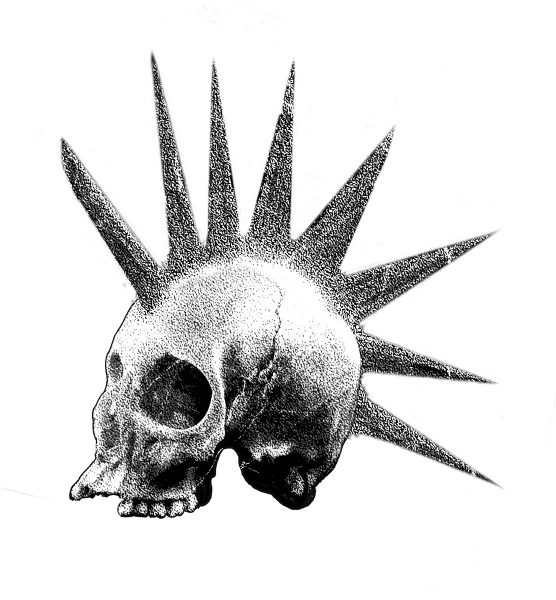
THRASH METAL
Origin: Early 1980s
Speed. Aggression. Shredding. All characteristics of Thrash Metal, which is often what most uninitiated listeners think of when they picture metal. Melded from the fires of punk and extreme metal, Thrash came to embody the in-your-face, fast-paced lifestyle of partying and ripping some rad solos. Shows were often rowdy, sweaty and physical ordeals.
Teutonic: Kreator, Sodom, Power Trip
Crossover: Suicidal Tendencies, GWAR, Scatterbrain
Thrashcore: D.R.I., Code 13, Dirty Rotten Imbeciles
Speed: Slayer, Metallica, Anthrax
Groove: Pantera, Lamb of God, Sepultura
PROGRESSIVE METAL
Origin: Mid 1980s–Early 1990s
Progressive Metal is a fusion genre combing the headier and nerdier aspects of music theory with the aggression of metal. Often these bands have a pseudo-intellectual air about them. This genre can span into prog and more symphonic variations. Technicality, drama, and theatrics and general nerdy-ness are critical.
Power: Helloween, Sonata Arctica, Dragonforce
Prog: Opeth, Dream Theater, Tool
Djent: Meshuggah, Animals As Leaders, Periphery
Mathcore: The Dillinger Escape Plan, Converge, The Fall of Troy
NICHE METAL
Origin: ’90s–2000s
What about all the other weird metal genres out there? Things can get pretty strange pretty fast. With metal, if there’s a subject matter, odds are there is a metal genre devoted to it. Take Kawaii Metal for example. This is a Willy Wonka-wacky level combo of cutesy Japanese anime culture with the brutal instrumentation of Death Metal. Speaking of weird, a thing that also exists is a band purely devoted to Goblin-based metal. I’m talking costumes, themed lyrics, and stage tricks. The whole shebang.
Nu Metal: Limp Bizkit, Korn, Linkin Park
Funk: Faith No More, Infectious Grooves, Fishbone
Kawaii: Babymetal, Ladybaby, PassCode
Trap: XXXTENTACION, Ski Mask the Slump God
Pirate: Alestorm, Swashbuckle, Lagerstein
Goblin: Nekrogoblin
DEATH METAL
Origin: Mid 1980s
Death Metal, in the words of my dad, is “the one where they are just screaming and the music keeps changing.” More accurately, it’s a much more brutal version of your standard heavy metal flavor. Double bass pedals are used religiously and the guitars may sound atonal, in other words, very off-kilter and creepy. You’ve also got pig noises. Made by people. Yeah.
Industrial: Ministry, Nine Inch Nails, Rammstein
Deathgrind: Cattle Decapitation, Napalm Death, Cannibal Corpse
Symphonic: Septicflesh, Dark Lunacy, Ex Deo
Death’n’roll: Entombed, Carcass, Six Feet Under
Groove: Devourment, Ingested, Kraanium
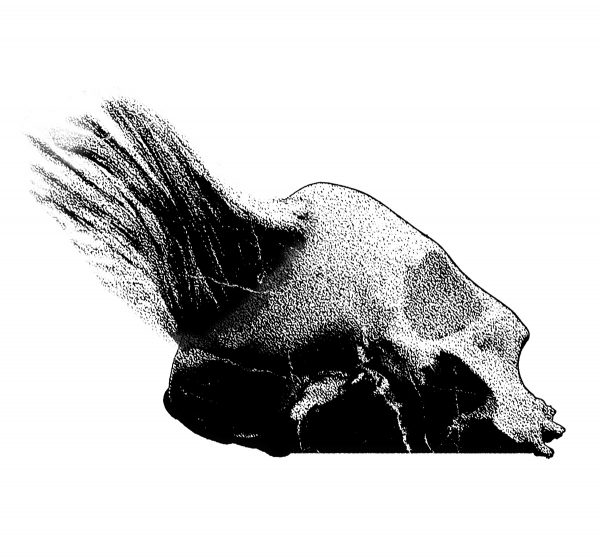
DOOM METAL
Origin: Mid 1980s
Think of Doom Metal as what would play at a skeleton funeral. Slow, melodic and heavy as hell. Doom Metal songs are very atmospheric and spacey, allowing space for the low-tuned guitars to batter the listener into a daze. You can trace Doom Metal back to Sabbath, with their slower and heavier bluesy material setting the stage for the intensity of modern Doom.
Stoner: Sleep, Electric Wizard, Kyuss
Epic: Candlemass, DoomSword, Isole
Funeral Doom: Bell Witch, Mournful Congregation, Esoteric
Sludge: Pallbearer, Melvins, Chelsea Wolfe
Drone: Boris, Sunn O))), Earth
BLACK METAL
Origin: Mid 1980s
You ever seen ghostly looking dudes in black and white makeup, tons of leathers, spiked bracelets, and hanging out in a graveyard? Yeah, that’s the Black Metal vibe. Originating from the DNA of Thrash, Black Metal is more focused on atmosphere and a lifestyle. The music is often recorded very lo-fi, and can be overwhelmingly trebly and harsh. Blast-beats tend to originate from this scene too.
Norwegian Black: Mayhem, Darkthrone, Emperor
Blackened Crust: Black Kronstadt, Iskra, Martyrdöd
Blackgaze: Deafheaven, Alcest, Oathbreaker
Unblack: Antestor, Horde, Living Sacrifice
Post-Black: Wolves in the Throne Room, Ulver, Arcturus

